
War, what is it good for?
Absolutely nothing
Say it again
—Edwin Starr
The variety and scope of the National Park Service’s parks is made abundantly clear by a visit to Castillo de San Marcos National Monument in St. Augustine, Florida. This isn’t the towering cacti of Saguaro National Park or the gurgling, moss-strewn swamp of Barataria Preserve, or the phantasmagoric formations under the cold earth in Carlsbad Caverns: The fort in St. Augustine is an American history lesson. People, not wild nature.
Having passed through St. Augustine a couple of years ago and managed not to see the fort, Masayo and I were determined to see it this time. And what better time: this is a National Parks road trip, after all.

Our hotel was close enough to the fort that we didn’t have to drive there, and deal with tourists poaching all the parking spaces. (Parking is a major hassle in St. Augustine.) After home-cooked pancakes at the quirky Pirate Haus Hostel we walked over and saw crowds already marching along the paths leading to the fort – families, groups of school kids, and others. We haven’t seen crowds on this trip much yet – one of the major benefits of scheduling a visit in the shoulder season before summer – and now we would.

In fact it wasn’t too bad at all. There was plenty of elbow room as the people inside the fort, us included, walked up and down its wide stone stairways, peered at exhibits in various rooms, and looked out at the views over northeastern Florida, imagining what they looked like three hundred years ago.
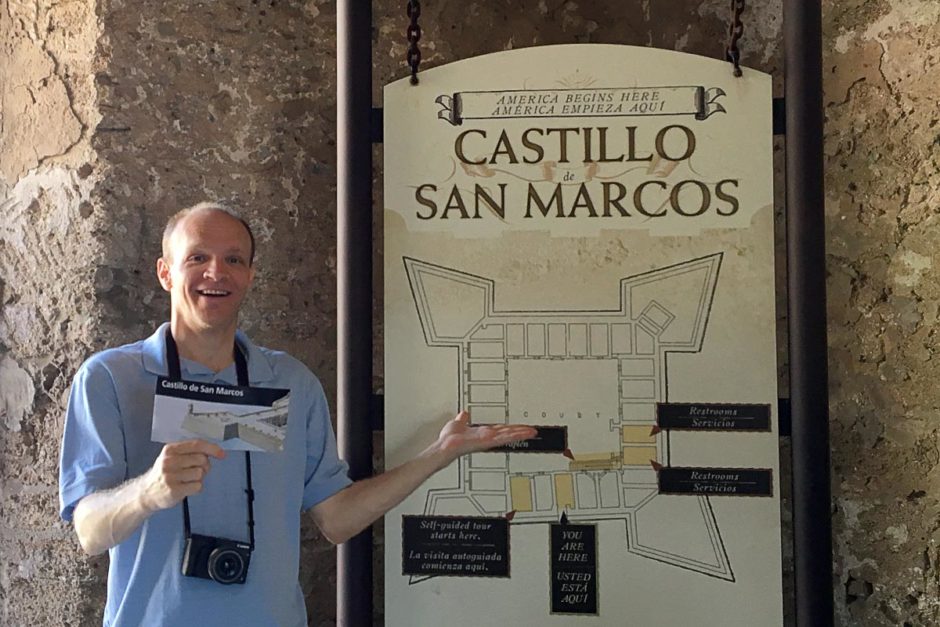

The fort has had quite a history, belonging at various points to Britain, France, the Confederacy, and the United States. Soldiers were stationed there, of course, but their families also lived on site. As one ranger pointed out, a soldier could be manning a canon on top, firing at enemy ships, and had to be worried about defending not only the fort and his country but his own family one floor below.

Several times a day a canon is fired for tourists, a display of eighteenth century firepower accompanied by a fascinating explanation. In the one we saw, while crowds looked on in rapt attention, a ranger plus four volunteers went through the firing ritual, bowing to one another and strutting around, packing the gunpowder and shot, giving and receiving barked orders in contemporaneous Spanish. It was great, and one of the few times you’ll see a National Park ranger wearing something besides the regular uniform.
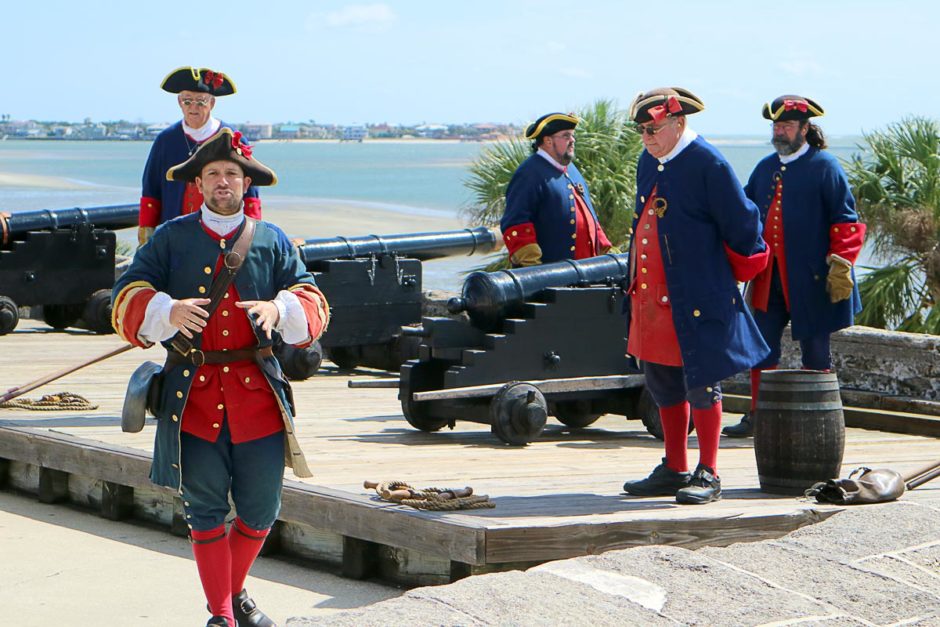
They don’t use actual canon balls (or anything else) for the demonstration but the blast was still jolting. Everyone gasped, and I’m sure everyone like me who was taking video of it has a big side-jerk in their footage at the moment the charge went off. The ranger subsequently explained that they’d actually use about three times as much powder in real life, making a much louder blast.
Imagine living down in the fort during such a battle.
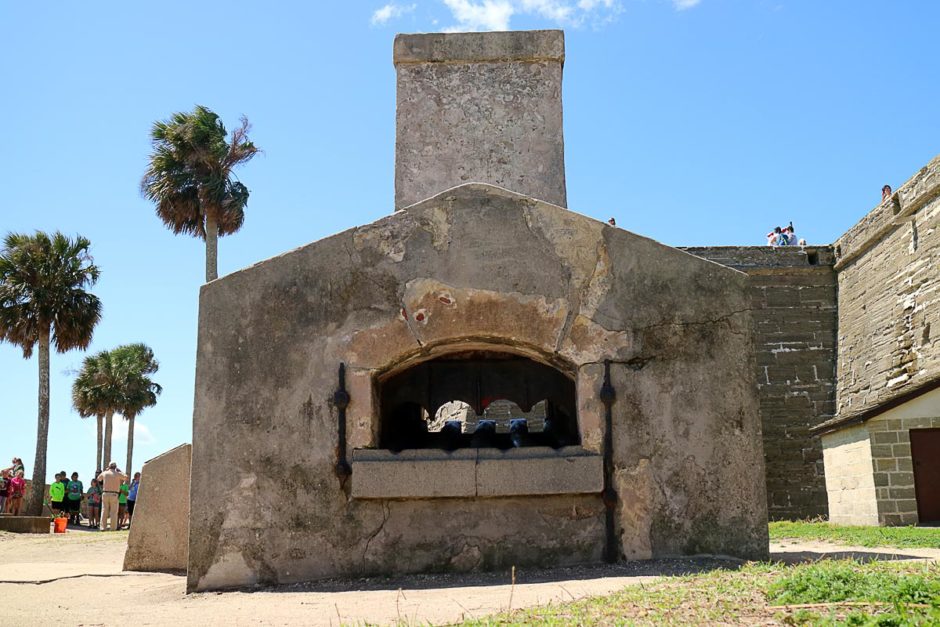
Shot furnace. Canon balls were superheated so they’d start fires when they struck enemy ships.
Other exhibits showed more of the history of Castillo de San Marcos and daily life there. In one room, the soldiers’ barracks, two guys in period garb sat at a table, eating a playing cards and talking and laughing. They ignored the tourists – their job was to be living museum objects. I think that’s a cool idea.
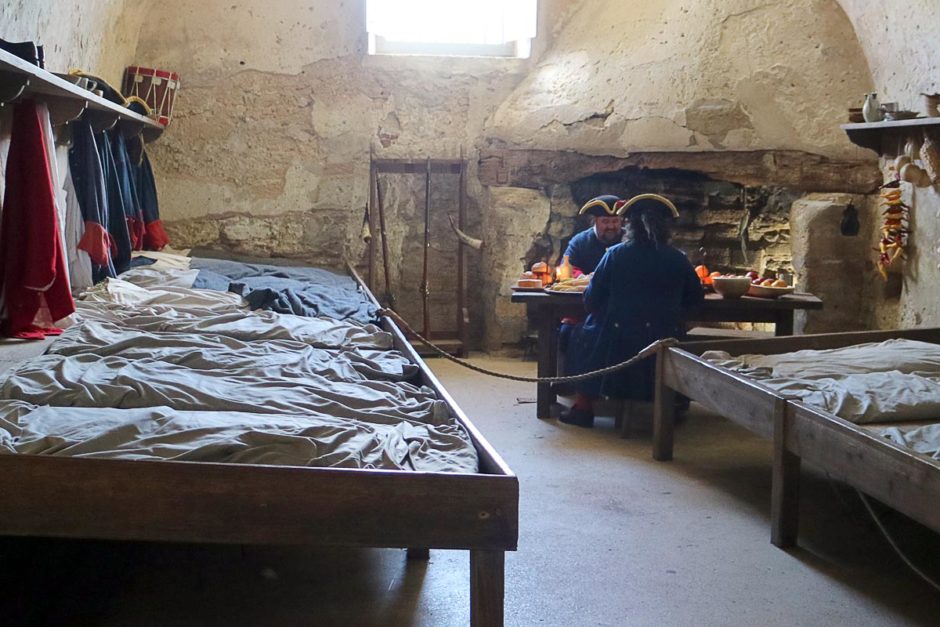
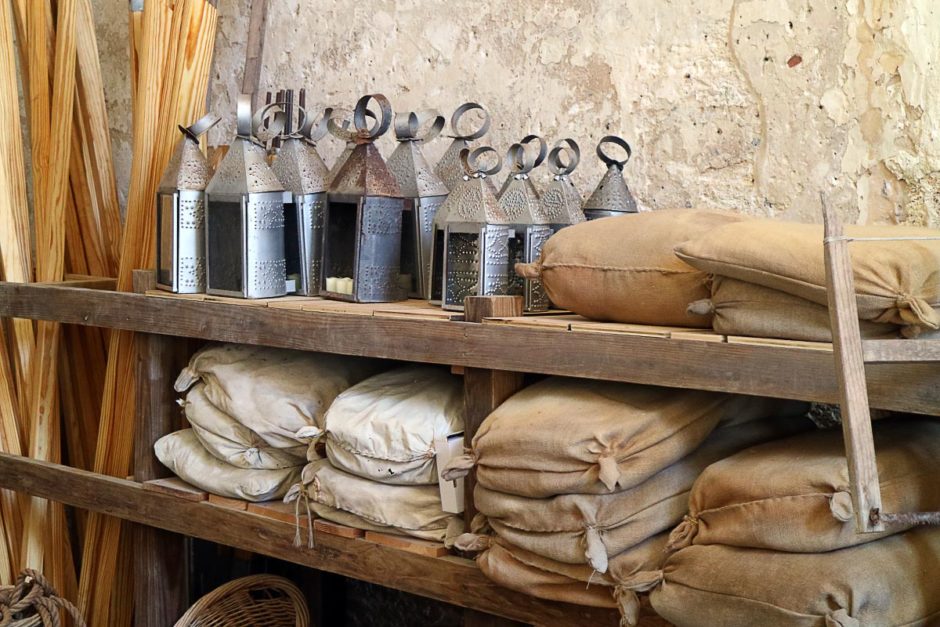
The views were dazzling, modern St. Augustine and its bay glinting in the sunshine but not yet baking in early May, and the displays in the fort were absorbing. But it doesn’t take long to see all of Castillo de San Marcos; even after walking completely around the outside walls of the compound we’d only spent ninety minutes there and felt we’d seen it all. Quite unlike the other parks we’ve seen on this trip so far, which stretch dozens or hundreds of miles and consist mainly of untouched nature.
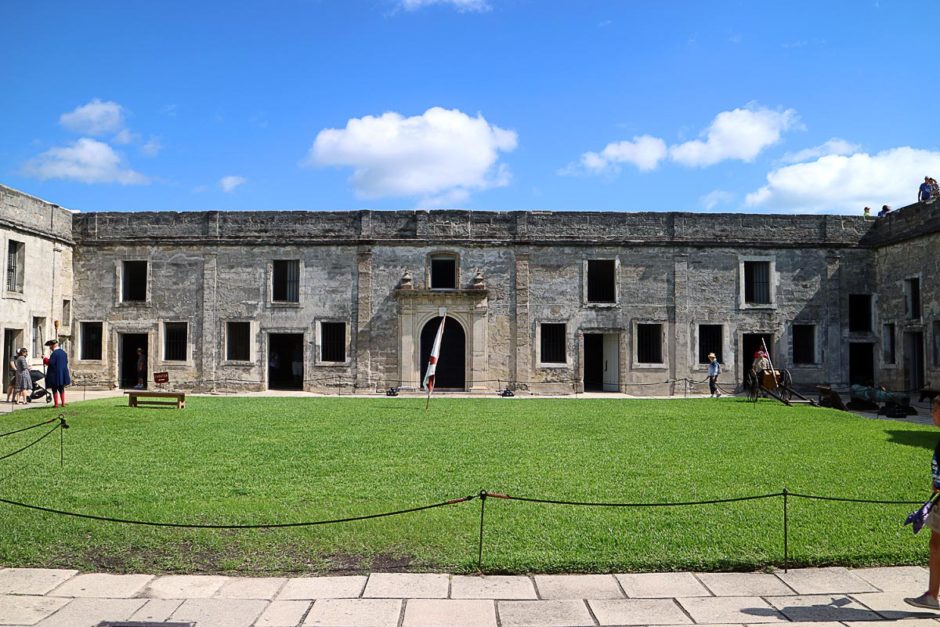
Castillo de San Marcos is well-maintained and superbly thought-out, an accessible site that gives a real, tangible impression of what life was like in its heyday. In America’s oldest city, it offers a great balance to the more crass and touristy (but, oddly, still nice) St. Augustine that most visitors find themselves dealing with nearby.
Recovery day for diabetes
Yesterday I had a terrible post-lunch blood sugar of 429 because I’d forgotten to take my shot for lunch. I fixed it instantly but wondered if I would suffer any ill aftereffects during the trip to the fort today.
Still kicking myself for my stupidity yesterday, but not wanting to take any chances or make any presumptions about what that fun-loving rascal diabetes might have in store for me today, I packed my meter and several glucose tablets for the tour around Castillo de San Marcos.
In the morning, upon awakening, my BG was 189. Not too terrible, but then I had pancakes with powdered sugar for breakfast. Talk about living dangerously! I guessed at a shot, tried to factor in the fact that I was going to be walking around for some unknown amount of time, and shot up.
Masayo and I ended up strolling around St. Augustine a while before heading to the fort; all in all I walked for about two hours including going up and down several staircases.

This frog jumped onto the car when we opened the trunk. I took his appearance as a good omen.
Before lunch, not having needed any of my glucose tablets, I was pleased to find my BG at 139. Enough time had gone by since the 429 yesterday – I considered that episode well and truly over now, and had done fine with the walking and the pancakes.
Later before dinner, after a confusing two-part lunch for which I thought I’d done particularly well with my Humalog dose(s), I was back up to 276.
Hey, another day, another new diabetes challenge. That’s what makes it so much fun…
Thanks for reading. Suggested:
- Share:
- Read next: Day 31: All trees and no mosquitos in Congaree National Park
- News: Newsletter (posted for free on Patreon every week)
- Support: Patreon (watch extended, ad-free videos and get other perks)

Support independent travel content
You can support my work via Patreon. Get early links to new videos, shout-outs in my videos, and other perks for as little as $1/month.
Your support helps me make more videos and bring you travels from interesting and lesser-known places. Join us! See details, perks, and support tiers at patreon.com/t1dwanderer. Thanks!
